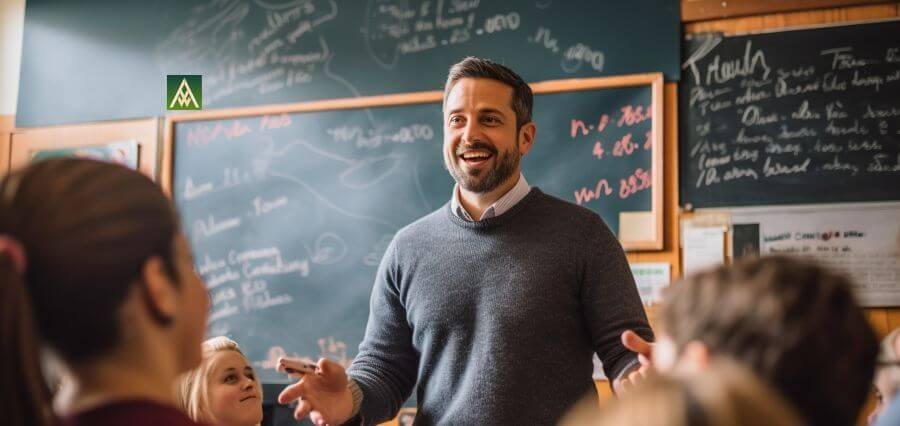In a technology-driven, metric-minded, digitally obsessed era, there is a risk of oversimplifying education to systems, timetables, and screens. But beneath the framework of curricula and assessment regimes lies something much more fundamental: the human relationship between teachers and students. It is this relationship—founded on empathy, trust, and a shared sense of purpose—that informs not just academic success but the moral development, confidence, and aspirations of students.
Good teachers know this instinctively. They don’t just teach lessons—they cause change. They don’t just educate minds—they set souls on fire. They know that teaching is not just a career; it’s a type of leadership based on empathy, imagination, and unshakeable faith in what people can do.
The Educator as a Leader
Although the term “leadership” is usually applied to administrators, policymakers, or business executives, the reality is that all educators lead—inside the classroom, in the community, and in the lives of the students they touch. They lead through example, by design, and by influence.
Leaders are those who lead through building safe and inclusive spaces where students feel seen, heard, and valued. They foster a sense of belonging that goes beyond scholastic success, focusing on emotional health, self-esteem, and development. This type of leadership cannot be quantified by test results alone—it is seen in the quiet assurance of a student who finally speaks up, in the perseverance of a learner who finds their voice, and in the curiosity that is ignited by a moment of authentic engagement.
These teachers are not merely presenters of knowledge—financial service providers they are builders of potential.
Vision Beyond the Classroom
Excellent teachers also lead with vision. They envision education as more than content provision but as an agent for individual and societal change. Their influence spreads beyond textbooks and schedules into students’ values, conduct, and aspirations.
Such visionaries are highly sensitized to the new world and the emerging learning needs. They are responsive to various learning styles, adopt technology responsibly, and weave global competencies such as empathy, collaboration, and digital citizenship into their instructional practices. They do not shy away from change but advocate for it where it is beneficial for the comprehensive growth of their students.
These teachers understand that preparing students for the future is about preparing them to think critically, care deeply, and act responsibly in a world of complexity.
The Power of Empathy
At the center of heart-centered education is empathy—understanding and relating to students as people with their own stories, strengths, and challenges. Empathetic teachers are listeners. They see that each student comes with a different context to the classroom and that success will be different for each of them.
Empathy enables instructors to recognize potential where other people might recognize problems, to offer grace when others offer judgment, and to inspire hope when situations appear desperate. Empathy lays the foundations of trust, which subsequently provides the psychological safety students need to risk intellect, test new perspectives, and learn from mistakes.
In the all-too-typical fragmented and pressurized education systems of today, the work of empathy is more critical than ever. It reminds us that in order for students to be able to succeed, they need to feel valued—both as learners, but also as human beings.
Resilience Through Relationships
Teaching leaders who teach with heart and vision also teach resilience, not as acting out strength, but as a humble commitment to holding on, being flexible, and being concerned. They understand that education is not necessarily linear or straightforward—that students encounter interruptions, inequalities, and emergencies that can sidetrack education. But by assuring students with regular support, intersubjective depth, and high expectations, these teachers enable students to face adversity with assurance.
They also illustrate the value of authentic relationships in maintaining learning. In a world in which disconnection and disengagement are on the rise—especially in virtual classrooms—connection-oriented teachers are redefining what it means to teach well.
The best teachers understand that rigor and safety are not just possible together, but that they reinforce each other.
Educators as Lifelong Learners
Visionary leadership also involves a willingness to grow personally. Exceptional teachers are not fixed in their ways—they are ever-changing, learning from their students, colleagues, and experiences. They reflect on their teaching, welcome feedback, and explore innovative methods to engage and inspire each learner.
This humility and appetite for learning deepen their leadership. It communicates to students that learning is not a destination, but a lifelong path—that even educators must keep discovering.
Such teachers create cultures of collaborative exploration and joint creation, wherein learning is a collaboration, and wherein students are encouraged to bring their full selves into the equation.
Conclusion: The Legacy of Heart-Led Leadership
Ultimately, children will forget the facts and formulas they’ve learned, but they will never forget the educator who believed in them, who pushed them with compassion, and who saw their humanness even when they couldn’t yet see it for themselves.
This is the heritage of master teachers—the ones who inspire not only with their intellect, but with their heart. In every classroom, in every corner of the globe, they are shaping the future—slowly, surely, one student, one relationship, one act of compassion at a time.
The human element of education is not a nicety—it is the bedrock of enduring learning. And in a world that becomes more digital, automated, and data-driven every day, it may be the most sustainable and revolutionary form of leadership there is.
Read More: Leading the Learning Revolution: Redesigning Education for Relevance




